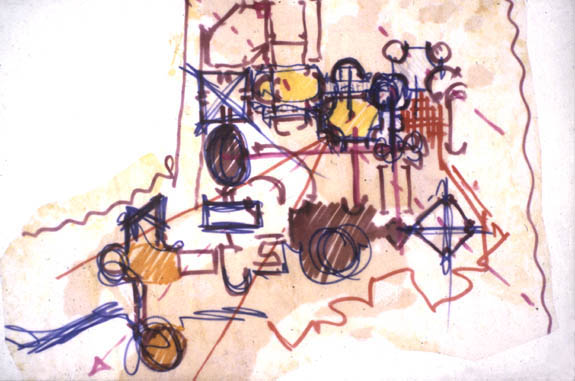

THE KEY DRAWING OF THE DESIGN PROCESS.This drawing, as one may see, was done very quickly. It summarised the whole compositional strategy, which was then not changed at all. It brought together a very long design struggle, whose details I will, one day, publish, if only to dispel the myth that picturesque composition is 'artless' and without calculation. The English version of the Arcadian Landscape painted by Claude Lorraine never succeeded in bringing the native peasantry within its 'classicisingly antique' perspective. In this it differed from the Venetian, where Palladio's buildings were commercial farms whose patrons, standing on the piano nobile, could project their cultivatedly Antique vision over the 'working landscape' as well as its inhabitants. This English failure, which applies to both patron and worker alike, led to the deathly hush of the Jardin Anglais in which nothing stirred except salaried shepherdesses and philosophically qualified hermits. The 'romantically artless' tendency in English composition, which is charming, if mainly dumb, is exercised in my composition. I do, however underlie it with an attempt at some formal rigour: a counterpoint of various shapes. But these were early days. My knowledge of iconology was not much advanced. My main object was to test my 'Primitive' Order by making it capable of a complex composition using as many forms as I could justify through the Museum's Programme. The only one I failed to 'prove' was a tower, or spire. (Medium: felt tip pen on tracing paper. Size of the original 200 mm wide) The Competition Design for the Burrell Museum, Glasgow. |